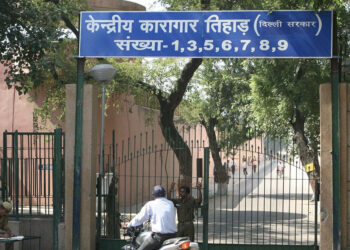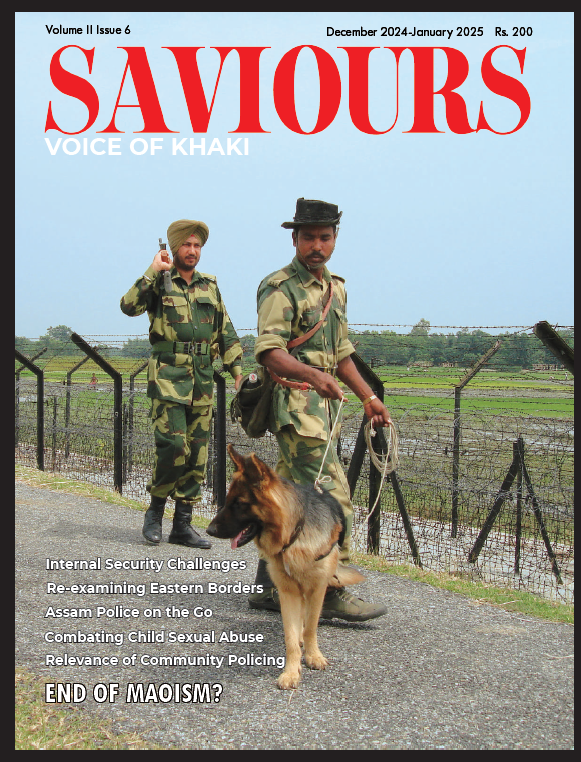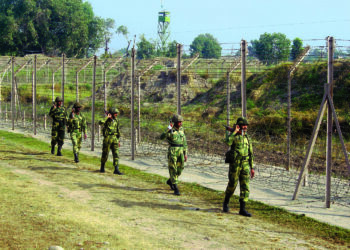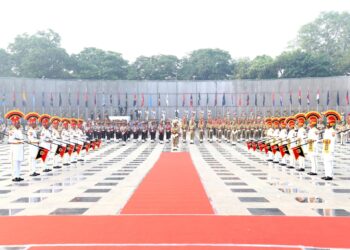18th of July, which is the birthday of Nelson Mandela, is celebrated as the Nelson Mandela International Day recognizing and rededicating the commitment to human rights, conflict resolution, and reconciliation.
This day is special to prison officials across the globe as the day is also utilized to promote humane conditions during incarceration; to raise awareness about inmates being an inalienable part of society and to value the work of prison staff as a social service of particular importance.
Nelson Mandela fought apartheid for decades and was sentenced to an astounding 27 years in jail and stood at least four trials. He observed, “It is said that no one truly knows a nation until one has been inside its jails. A nation should not be judged by how it treats its highest citizens, but its lowest ones”
In 2015, United Nations General Assembly adopted the revised Standard Minimum Rules for the Treatment of Prisoners. These rules are known as the Nelson Mandela Rules in honor of the great South African leader. Over a hundred different rules were studied by the UNGA and these were revised in nine thematic areas: Prisoners’ inherent dignity as human beings; Vulnerable Groups of Prisoners; Medical and Health Services; Restrictions, Discipline, and Sanctions; Investigations of deaths and torture in Custody; Access to Legal Representation; Complaints and Inspections; Terminology and Staff Training.
Like the rest of the world, the Indian Prison system is overstretched and inadequately managed which impacts the prisoners, their families, and society as a whole. According to National Crime Record Bureau’s(NCRB) data, Indian Prisons suffer from an average occupancy rate of 118% as of 31st December 2020. There are a total of 1,347 prisons including 606 Sub Jails, 413 District Jails, 145 Central Jails, 88 Open Jails, 44 Special Jails, 29 Women Jails, 19 Borstal Schools, and 3 Other than the above Jails.
Against the capacity of a little over four lakh inmates, the prisons host a little under five lakh prisoners putting pressure on the infrastructure, resources, and staff.
As of April 2022, there are 773 districts in India but the number of district jails is much less at 413. A large state like Uttar Pradesh which has 75 districts has only 61 district jails despite the fact that the state accounts for 22% of the country’s prison population. No wonder the state has the worst occupancy rate at 177% followed by Sikkim and Uttarakhand. These figures point towards a lack of coordinated efforts to address the problem where it hurts the most.
Transportation of inmates to and from courts, hospitals, etc. is an expensive and manpower-intensive activity. There is a need to break away from the traditional Central, District, and Sub Jail concept and just increase the capacity of the existing prisons, to align the prison system with the locations of the courts in the country. It will reduce the logistics cost to the exchequer in the longer run. It will also help in the proper segregation of convicts and undertrials. Convicts can be confined in the Central Jail only. Each state needs to prepare a five-year plan to create facilities to address overcrowding and provide humane conditions in prisons.
The reason for excessive overcrowding is undertrial prisoners who account for 76% of the total occupancy. Faster trials, liberal bail provisions, and scrupulous adherence to Section 41(A) of CrPC by all components of the criminal justice system alone will alleviate the situation. No single wing of this system can be blamed for this abject situation. There are instances of undertrial prisoners who languish in jail because they cannot pay for the surety or the bail bond. The state and district legal aid authorities can step in to find a solution to this problem as the surety and bond amounts are not large. Prison administration can also play a positive role in such cases by enrolling such undertrial prisoners in wage-earning programs. As per the jail manuals, only the convicts can be made to work and earn wages. But by making an exception only on humanitarian grounds for such poor inmates, a number of undertrials will gain their freedom and a sense of empowerment after securing bail with their own hard-earned money.
There are huge vacancies of critical staff in prisons across the country. Thirty percent fewer supervisory and watch & ward and medical and paramedical personnel are available for day-to-day functioning straining the life-work balance of the staff and denying them in-service training opportunities. It also adversely affects the morale and motivation of the prison staff. The sanctioned staff strength is nowhere close to the strength mandated by the Model Prison Manual approved by the Home Ministry.
The issue of parity of pay and allowances of the prison staff with the police department is yet to be put to rest. It is a daily struggle for the prison staff in the states to ask for these basic perquisites.
This day is supposed to celebrate the prison staff as well. But unfortunately, like other streams of service in the khaki, the number of awards and recognition available to the prison officials is minuscule. There are no awards for best-managed jails in small and large states like the police stations. The union home ministry should consider instituting these awards to keep the mojo of the staff intact.
India like the rest of the world has moved away from retributive incarceration to reformation and reintegration agenda for its prisoners. India ratified the International Covenant on Civil and Political Rights (ICCPR) in 1979 which remains the core international treaty on the protection of the rights of prisoners. The International Covenant on Economic, Social, and Cultural Rights (ICESR) states that prisoners have a right to the highest attainable standards of physical and mental health. A lot has been achieved in the last decade due to judicial activism and the efforts of some motivated prison administrators. Now is the time for a concerted effort by all to overhaul the prison infrastructure and human resources which costs a fraction of expenditure compared to the expenditure on the other components of the criminal justice system.










